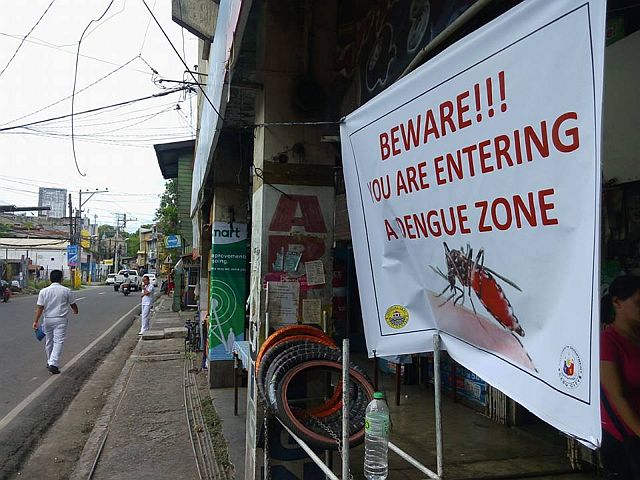State of calamity declaration mulled

Barangay Parian, Cebu City is reported has the most number of dengue cases. (CDN PHOTO/JUNJIE MENDOZA)
First it was the City of Cebu.
Now comes the province.
Capitol officials yesterday recommended the declaration of a state of calamity over rising dengue cases in the province.
The recommendation to Governor Hilario Davide III, made by Cebu Provincial Disaster Risk Reduction and Management Office (PDRRMO) chief Baltazar Tribunalo Jr., was viewed by him as “a way to give justice” to the spike in figures as the Provincial Health Office (PHO) noted a more than 200 percent rise in dengue cases this year compared to the same period in 2015.
“There is enough reason to declare a state of calamity. First, because of the figures which include deaths. Second, we really need to educate the public and strengthen our information, education and communication campaign and at the same time, we need to do something immediately,” said Tribunalo.
PHO has recorded 5,700 dengue cases in the province with 55 deaths as of October 12. The latest fatality was reported last October 7 in the town of Pinamungajan, southwest of Cebu.
Expressing alarm over the rapid increase in dengue fever cases in the province, the Cebu Provincial Board on Monday declared a dengue outbreak in the whole province, a move that continues to raise the eyebrows of Department of Health officials in the region.
“What they (PHO) did was to announce the prevalence of dengue in Cebu, in actual numbers. Our records show that the numbers do not constitute a prevalence of dengue but only incidence, therefore it won’t reach to epidemic proportions,” said the health department’s Regional Epidemiological and Surveillance Unit (Resu-7) chief, Rennen Cimafranca.
Had the provincial government asked for their recommendations, the dengue crisis would instead be declared only as “an increased number of dengue cases” and not an outbreak following criteria set by the Epidemiology Bureau (EB).
“The criteria states that in declaring an outbreak, the figures should be stated in percentage, not in actual numbers,” said Cimafranca as he explained that statistical laws in epidemiology state that prevalence refers to the proportion of a disease’s effect to a given population.
While there is no law mandating local government units to coordinate with Resu before declaring a province-wide outbreak, Cimafranca lamented that consultation and coordination between concerned government agencies were important to prevent record lapses and discrepancies in the data presented to the public.
The province-wide dengue outbreak declared by the provincial government was a first in the history of Cebu, according to Cimafranca.
But while the health department worries over the correctness of the declaration, based on statistical rules, the provincial capitol insists that the outbreak declaration, and the upcoming declaration for a state of calamity, were needed for the sake of practicality.
Tribunalo explained that if the province is declared under a state of calamity, the risk reduction office can allocate funds needed by PHO using PDRRMO’s Quick Response Funds (QRF).
“We can maximize the QRF. We can purchase larvicides, misting machines, and we can add volunteers for 3 weeks to one month,” Tribunalo said.
The PDRRMO still has P46.8 million left on its budget for the year; while the PHO has used up its P2 million anti-dengue funds in the purchase of larvicides, misting operations, clean up drives and information campaigns.
PHO public health head Dr. Nino Ismael Pastor, meanwhile, defended the action of the provincial government declaring a province-wide dengue outbreak.
“Our principle is risk reduction. With the declaration of the entire province under a dengue outbreak, we can initiate steps to protect municipalities with lower or no dengue cases against those with higher cases,” Pastor said.
Tribunalo is set to meet with the governor later this week to discuss his recommendation.
Disclaimer: The comments uploaded on this site do not necessarily represent or reflect the views of management and owner of Cebudailynews. We reserve the right to exclude comments that we deem to be inconsistent with our editorial standards.
